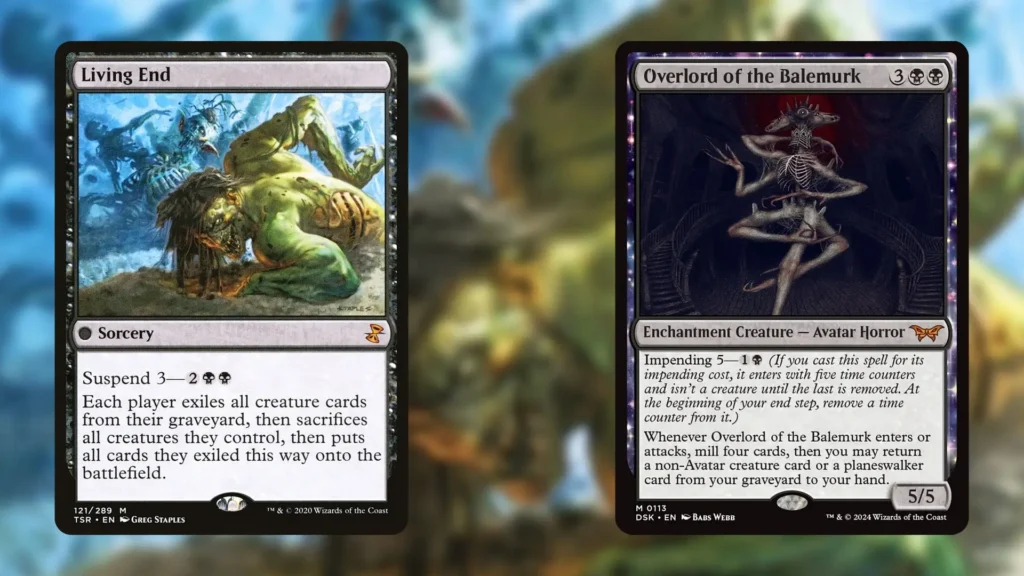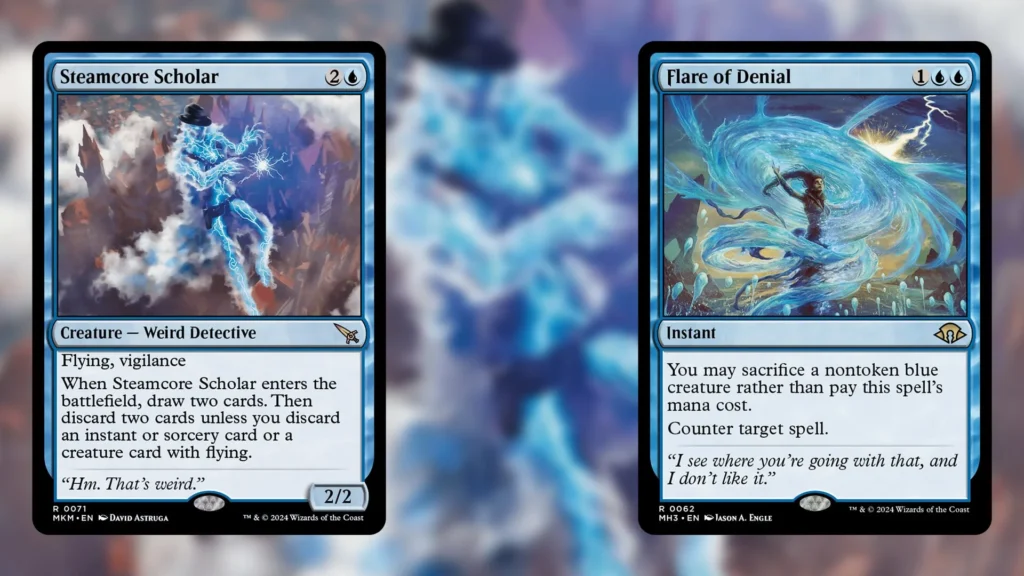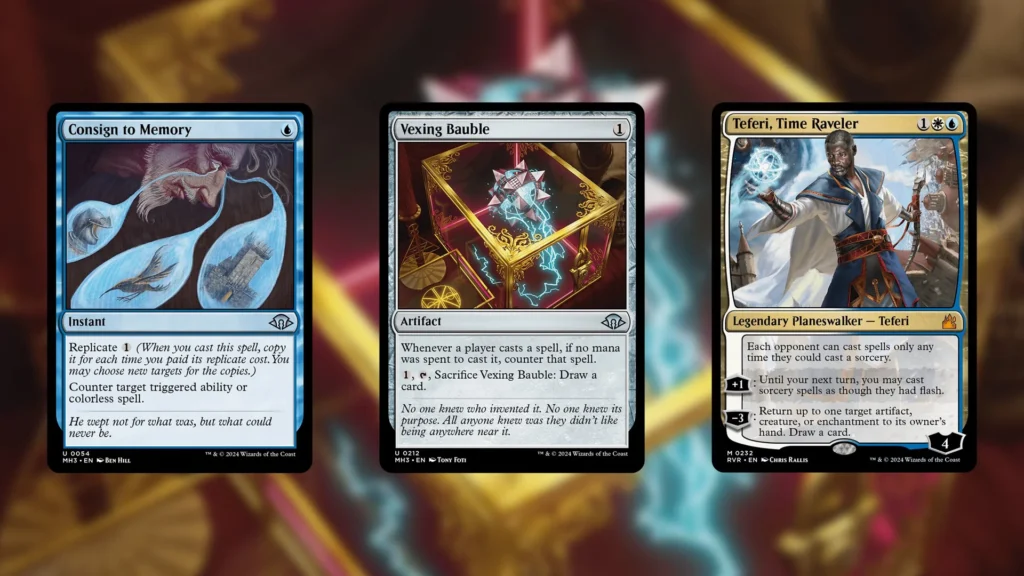The greatest honor that can be bestowed upon any powerful MTG archetype is getting part of its deck banned. While this has certainly happened a lot in recent MTG history, in the grand scheme of things, getting a card banned is not the easiest thing to do. When bans do happen, they cement the archetype’s infamy, making players wary when it returns.
Living End was, once upon a time, a big reason why Violent Outburst was banned in Modern. Thanks to its free interaction suite and follow-up plays, instant speed Cascade proved to be too much for Modern. Even after being banned, this deck continued to thrive until Modern Horizons 3 was released, when it finally stopped being competitive.
Despite falling out of favor, Living End still appears from time to time. Right now, an extremely bizarre build of the deck is top eighting multiple times across 100+ player events. Curiously, this variant of Living End cares a bit less about Cascading to its spell than usual.
Living End’s Newest Form

Living End, up to this point, has been a very simple deck. You want to Cycle creatures like Street Wraith into your graveyard, draw a Cascader like Shardless Agent, and cast Living End to reanimate all the creatures you’ve dumped into your graveyard. From there, you can use free spells like Force of Negation and Subtlety to delay your opponent’s antics until you present your opponent with a lethal board. The deck’s construction was as simple as its gameplan and, for a long time, that formula remained unchanged, despite Living End’s inability to get results.
Now, a new variant of this infamous deck has appeared using far fewer Cascade and Cycling spells than usual. Instead, this new variant, which has already topped two 100+ player events, focuses less on aggressively Cascading for its namesake spell, and more on playing a steadier long game.
Overlord of the Balemurk, for example, is a really odd inclusion that doesn’t appear in typical Living End lists. While Overlord of the Balemurk does make a lot of sense in this deck, two mana for a mill effect is considered expensive compared to your other options. That, combined with Overlord of the Balemurk being a counterable spell rather than a Cycling effect, has scared players away up to this point.
The biggest reason for Overlord of the Balemurk’s inclusion, however, is a focus on Black in this variant. Despite Living End being black itself, the deck usually focuses on other colors to include more Cascaders like Ardent Plea in the 75. Instead ,Overlord’s ability to recur Shardless Agent, combined with Endurance‘s ability to reset your graveyard, can allow you to cast a lot more Living Ends than older, more streamlined variants of the deck, but will do so at a slower pace.
By focusing on black, this variant of Living End accesses Overlord as a pseudo-upgrade to Waker of Waves, and gets some interesting sidegrades that Overlord of the Balemurk synergizes with. Halo Forager, for example, is another black card that plays well with Overlord of the Balemurk, occasionally casting free copies of Living End out of the graveyard.
Outside of Overlord of the Balemurk, the biggest difference between this Living End archetype and its more traditional builds is the free spells.
Standard All-Star Returns

Since Grief was banned in MTG Modern, Living End has traditionally played some mix of Endurance, Subtlety, and Force of Negation for its free spell package. Flare of Denial, however, is a really weird card to see in this archetype, and all of the successful lists this past weekend ran a number of them. While Living End didn’t play blue creatures that were meant to be cast prior to their namesake spell in past variants, one new addition to the deck synergizes well with Flare of Denial, making it more playable.
The bizarre free counterspell is coupled with Steamcore Scholar, another weird addition that goes against typical Living End cards. It does synergize well with the other oddities in this list, however, since the card is capable of becoming sacrifice fodder for Flare of Denial, digs towards Shardless Agent, and can get Living End into the graveyard for Halo Forager.
These changes are likely in response to the combo-heavy metagame that Living End has to play against. In the past, resolving Living End with a full graveyard was almost always enough to close a game. Now, even if you pull off a Living End, your opponents could easily win the game combo-style with a variety of different archetypes on the following turn. Goblin Charbelcher combo, Amulet Titan, Storm, and Broodscale combo are all popular decks right now that threaten these scenarios.
Thankfully, Flare of Denial further backs up the plethora of free interaction that Living End already has, giving it a theoretical edge in combo mirrors. It primarily allows you to be less selective with how you use your other interactions in combo matchups, since certain pieces of interaction commonly perform better than others.
Watch Out for Splash Hate

If there was a reason not to play Living End right now, it’s the absurd amount of popular cards that unintentionally hate the deck out as a result of other trends. Vexing Bauble is a nightmare for Living End, shutting down the deck’s signature spell as well as all the free interaction you play. Living End currently runs four copies of Foundation Breaker in the sideboard to try and solve the problem.
Even more popular than Bauble, Consign to Memory is another problematic card for Living End that every single blue deck runs in their 75. This card is usually intended primarily to combat Eldrazi decks, but it also happens to counter Cascade triggers. Replicate adds to the hurt, making this difficult to fight with your interaction suite.
While the card hasn’t seen play in quite some time, Teferi, Time Raveler is also beginning to make a comeback after appearing in the breakout Jeskai Blink deck. This was traditionally used to counter Living End since it prevents you from putting Cascaded spells on the stack. Since Teferi also severely hampers your free interaction, it also causes a lot of trouble if your opponent manages to resolve it.
Despite all this hate, however, dedicated pilots are doing well with Living End. Your free interaction lines up extremely well into a lot of dominant Modern decks, and your plan is atypical enough for most decks to have a subpar game plan against it. The recent results are enough reason for many MTG Modern players to dust off their old Living End cards and give the deck another try.
Stick with us at mtgrocks.com: the best place for Magic: The Gathering coverage!

